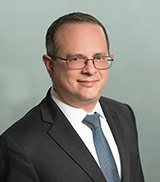California Supreme Court Clarifies the “Continuous Accrual” Exception to the Statute of Limitations, Expanding the Ability of Plaintiffs to Sue
in Civil Litigation by Stephen Raucher
On January 24, 2013, the California Supreme Court decided the case Aryeh v. Canon Business Solutions, Inc., 55 Cal. 4th 1185 (2013), and clarified the common law theory of continuous accrual as it pertains to statutes of limitation. The Court also settled a split of authority among appellate courts and held that continuous accrual does apply to causes of action arising under California’s unfair competition law codified in the Business and Professions Code § 17200 et seq. (UCL).
The ability to bring a lawsuit depends on whether the time period on a statute of limitations has run on a particular cause of action. The statute of limitations begins to run when a cause of action accrues. Under the common law “last element” accrual rule, this typically occurs when the elements of wrongdoing, harm and causation are complete. Because certain harms have the potential of recurring and repeating over time, courts and the California Legislature developed a series of equitable exceptions that modify the rules governing the initial accrual of a claim and the subsequent running of the statute of limitations period.
One of these exceptions is the theory of continuous accrual. The theory posits that a series of wrongs or injuries may be viewed as each triggering its own limitations period, allowing for newer violations to come within the applicable limitations period. Thus, although the initial violation might be time-barred because it occurred before the limitations period, events occurring within the statue of limitations are deemed timely. Further, Aryeh clarified that in continuous accrual cases, the series of wrongs are discrete and independently actionable. This is in contrast with the continuing violation doctrine, another exception to the “last element” accrual rule, which involves a series of small harms, any one of which may not be actionable on its own and does not trigger its own limitations period.
Following the federal trial court decision in Stutz Motor Car of America v. Reebok Intern., Ltd., 909 F. Supp. 1353 (C.D. Cal. 1995), a split of authority developed over whether continuous accrual applies in UCL cases. Stutz held that the UCL categorically foreclosed application of another accrual rule exception – the discovery rule. Cases following Stutz extended the reasoning to the continuous accrual rule. The contrary view was expressed in Broberg v. The Guardian Life Ins. Co. of America, 171 Cal. App. 4th 912 (2009), where the court reasoned that it is the underlying nature of the claim, not its form, that should control. Thus, just because a cause of action is pleaded under the UCL, application of the continuous accrual exception is not precluded.
The Aryeh case articulates and clarifies the nature of the continuous accrual exception, and distinguishes it from similar exceptions to the traditional common law “last element” accrual rule. But beyond holding that the continuous accrual exception applies to UCL claims, the decision also has important implications for many other types of claims, such as breach of contract and employment discrimination. After Aryeh, claims which might have been assumed to be stale in the past may have new life.
